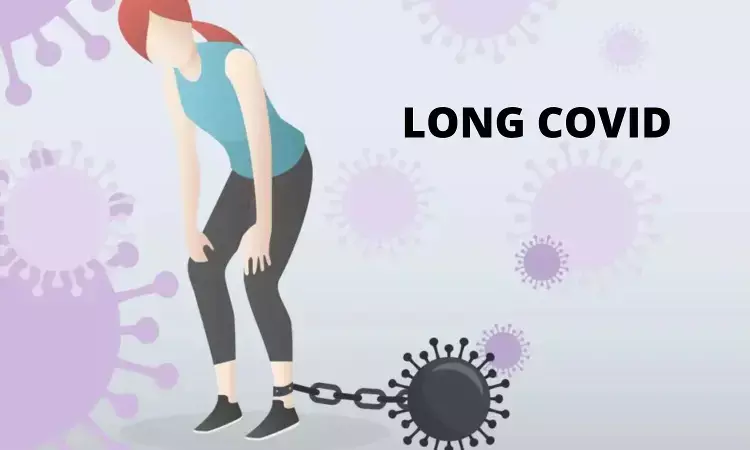- Home
- Medical news & Guidelines
- Anesthesiology
- Cardiology and CTVS
- Critical Care
- Dentistry
- Dermatology
- Diabetes and Endocrinology
- ENT
- Gastroenterology
- Medicine
- Nephrology
- Neurology
- Obstretics-Gynaecology
- Oncology
- Ophthalmology
- Orthopaedics
- Pediatrics-Neonatology
- Psychiatry
- Pulmonology
- Radiology
- Surgery
- Urology
- Laboratory Medicine
- Diet
- Nursing
- Paramedical
- Physiotherapy
- Health news
- Fact Check
- Bone Health Fact Check
- Brain Health Fact Check
- Cancer Related Fact Check
- Child Care Fact Check
- Dental and oral health fact check
- Diabetes and metabolic health fact check
- Diet and Nutrition Fact Check
- Eye and ENT Care Fact Check
- Fitness fact check
- Gut health fact check
- Heart health fact check
- Kidney health fact check
- Medical education fact check
- Men's health fact check
- Respiratory fact check
- Skin and hair care fact check
- Vaccine and Immunization fact check
- Women's health fact check
- AYUSH
- State News
- Andaman and Nicobar Islands
- Andhra Pradesh
- Arunachal Pradesh
- Assam
- Bihar
- Chandigarh
- Chattisgarh
- Dadra and Nagar Haveli
- Daman and Diu
- Delhi
- Goa
- Gujarat
- Haryana
- Himachal Pradesh
- Jammu & Kashmir
- Jharkhand
- Karnataka
- Kerala
- Ladakh
- Lakshadweep
- Madhya Pradesh
- Maharashtra
- Manipur
- Meghalaya
- Mizoram
- Nagaland
- Odisha
- Puducherry
- Punjab
- Rajasthan
- Sikkim
- Tamil Nadu
- Telangana
- Tripura
- Uttar Pradesh
- Uttrakhand
- West Bengal
- Medical Education
- Industry
Long COVID tied to range of clinical risk factors including hair loss and sexual dysfunction

UK: SARS-CoV-2 infection is associated with a plethora of symptoms that are related to a range of sociodemographic and clinical risk factors, states a study data published in Nature Medicine.The latest addition in the list are loss of hair and sexual dysfunction.
Infection with SARS-CoV-2 causes an acute multisystem illness referred to as COVID-19. Approximately 10% of individuals with COVID-19 develop persistent and often relapsing and remitting symptoms beyond 4 to 12 weeks after infection. The presence of persistent symptoms in a previously infected individual is commonly referred to by several terms including post-COVID-19 condition, post-acute COVID-19 syndrome, and post-acute sequelae of COVID-19 (PASC) and long COVID.
Long COVID has been associated with a broad range of symptoms and health impacts. A previous study showed that symptoms of long COVID, although commonly observed among patients with other viral infections such as influenza, occur more frequently following infection with SARS-CoV-2. Several systematic reviews have shown the most prevalent symptoms of long COVID, but data is scarce. A better understanding of the risk factors that contribute toward the development of long COVID is also needed.
Subramanian, A, University of Birmingham, Birmingham, UK, and her research team undertook a retrospective matched cohort study to determine symptoms that are associated with confirmed SARS-CoV-2 infection beyond 12 weeks in non-hospitalized adults and the risk factors associated with developing persistent symptoms.
Researchers used a UK-based primary care database, Clinical Practice Research Datalink Aurum, and selected 486,149 adults with confirmed SARS-CoV-2 infection and 1,944,580 propensity score-matched adults with no recorded evidence of SARS-CoV-2 infection for the study. Outcomes included 115 individual symptoms, as well as long COVID, defined as a composite outcome of 33 symptoms by the WHO clinical case definition. Cox proportional hazards models were used to estimate adjusted hazard ratios (aHRs) for the outcomes
Key findings of the study,
• A total of 62 symptoms were significantly associated with SARS-CoV-2 infection after 12 weeks.
• The largest aHRs were for anosmia (aHR 6.49), hair loss (3.99), sneezing (2.77), ejaculation difficulty (2.63), and reduced libido (2.36).
• The risk factors for long COVID included female sex, belonging to an ethnic minority, socioeconomic deprivation, smoking, obesity, and a wide range of comorbidities.
• The risk of developing long COVID was also found to be increased along a gradient of decreasing age.
The authors conclude that individuals with confirmed SARS-CoV-2 infection are at increased risk of reporting a wide range of symptoms at ≥12 weeks after infection, compared to propensity score-matched patients with no record of suspected or confirmed SARS-CoV-2 infection.
The present study results help to determine the breadth of symptoms that contribute to long COVID, inform clinical management and help healthcare providers identify population groups at higher risk of reporting persistent symptoms
Reference:
Subramanian, A., Nirantharakumar, K., Hughes, S. et al. Symptoms and risk factors for long COVID in non-hospitalized adults. Nat Med (2022). https://doi.org/10.1038/s41591-022-01909-w
BDS
Dr. Hiral patel (BDS) has completed BDS from Gujarat University, Baroda. She has worked in private dental steup for 8years and is currently a consulting general dentist in mumbai. She has recently completed her advanced PG diploma in clinical research and pharmacovigilance. She is passionate about writing and loves to read, analyses and write informative medical content for readers. She can be contacted at editorial@medicaldialogues.in.
Dr Kamal Kant Kohli-MBBS, DTCD- a chest specialist with more than 30 years of practice and a flair for writing clinical articles, Dr Kamal Kant Kohli joined Medical Dialogues as a Chief Editor of Medical News. Besides writing articles, as an editor, he proofreads and verifies all the medical content published on Medical Dialogues including those coming from journals, studies,medical conferences,guidelines etc. Email: drkohli@medicaldialogues.in. Contact no. 011-43720751


